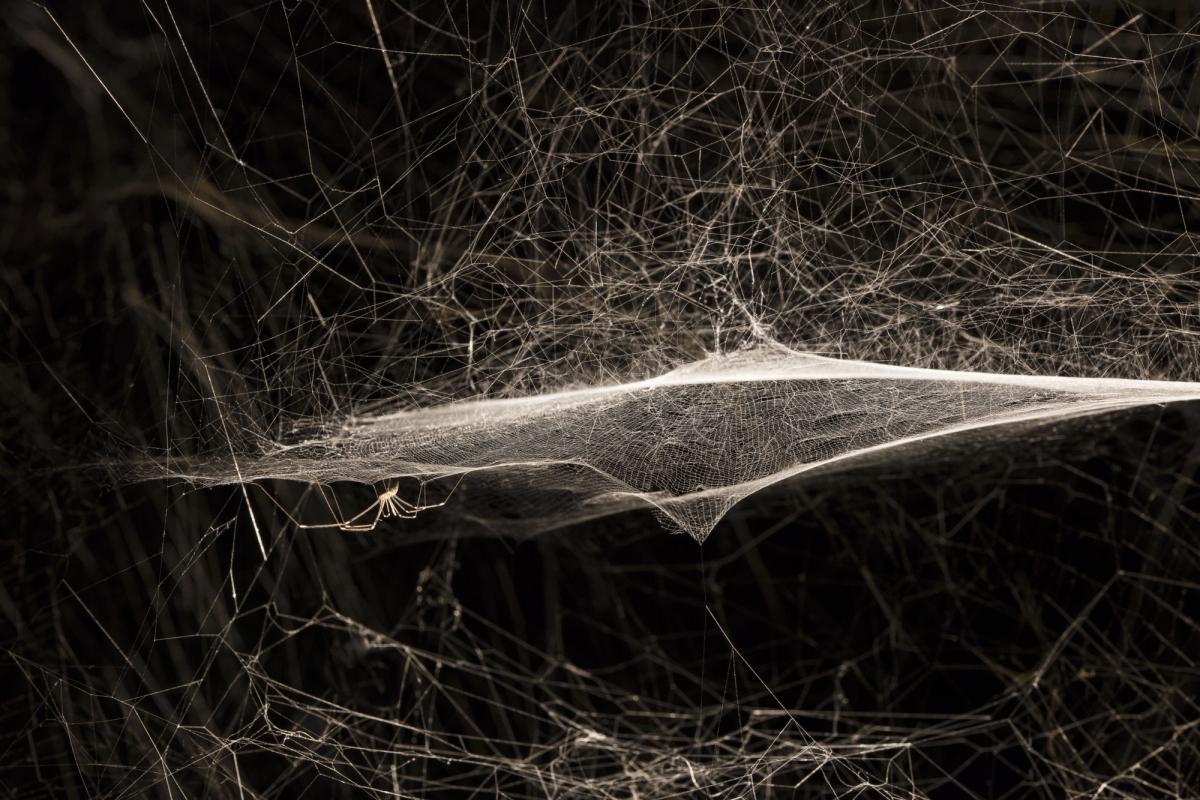On Air (until 6 January) sees the Palais de Tokyo, Europe’s largest centre for contemporary art, give their annual “carte-blanche” to Tomás Saraceno. The Argentinian artist has filled the space’s 64,500 sq. ft with an ambitious combination of astrophysics and arachnid architecture. Impossibly dense spiderwebs preserved in glass boxes inform the complex ecosystems that Saraceno devises. Strange forms that will perhaps make more sense in the future, or with the aid of an extra seven eyes. Saraceno’s looks beyond the Anthropocene—the epoch defined by the significant impact of human activity on the Earth’s ecosystem—into what he terms the “Aerocene” of the nearby future where the environmental issues facing humanity are approached with curiosity and innovation. Diving bells made of silk spun by underwater spiders are paired with ethereal floating structures and provide inspiration for fossil-fuel free airborne travel, to combat the idea that future human developments need necessarily move away from the natural world. The show’s pièce-de-résistance transforms a large double-height space into Saraceno’s own interactive webbed world, tightly pulled cords criss-crossing together to form a metaphor for the enormity of the cosmos. This mammoth show is vast in scope but greatly impresses due to the intelligence of the mind behind it, which unencumbered by the strictures of genre and discipline, envisions a future unlike anything you have seen before.
If the carte-blanche given to Saraceno was truly blank, then the one handed to the French artist Annette Messager by the Fondation Giacometti has already been partially scribbled on by Alberto Giacometti himself. This is a strange conversation with only half the speakers able to actively participate. What emerges in this exhibition (until 13 January) is an inevitably one-sided, though surprisingly dynamic dialogue between the two artists. Giacometti’s favourite appendage—the nose—is given an entire room where his famous Pinocchio sculptures are placed alongside humorous, mimicking works from Messager. She further takes Giacometti’s deep interest in sex—portrayed in his 1932 sculptures inspired by rape and death—and places them next to a sleeping bag, tied and hung to resemble a life-bearing vagina. Playful and considered, Messager's engagement with Giacometti’s work contains a distinct amount of levity and never strays into a direct critique of the artist’s oeuvre.
The Galerie Perrotin is host to two separate rather absurd exhibitions (both until 22 December). The first by Scandinavian duo Elmgreen and Dragset—who have long staked their claim as the contemporary art world’s premiere subversive humourists—serves as a highlights reel for some of their most acclaimed works, such as the abandoned swimming-pool currently showing at London’s Whitechapel Gallery. Clean, precise industrial sculptures are combined with jagged sections of tarmac, haphazardly strewn over a room of the gallery, while upstairs sections of road signage are presented with the same reverence the Perrotin might hang a Sol Lewitt. Sophie Calle splits her exhibition into two. One section is comprised of photographs covered by cloths adorned with contemplative poems, which when lifted reveal images that sometimes provide clarity, and sometimes only serve to confuse. In the other section, downstairs, lies a grand tribute to her dead cat Souris (mouse in French). The feline is so beloved that Calle asked a collection of famous musicians, including Pharrell Williams, Jean-Michel Jarre and Bono, to record songs dedicated to Souris, which have been compiled into an album for visitors to listen to. The strange nature of the exhibit is trumped by the power of devotion and loss.


